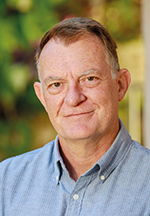
In South Africa, 24 September has officially been known as National Heritage Day since it was proclaimed as such in 2008 (previously, 24 September was known as Shaka Day, but was not an official public holiday).

In South Africa, Heritage Day is remembered by many people dressing up in traditional attire and getting together for a family feast, prompting a large group of the SA population, in 2005, to try to get the day renamed ‘National Braai Day’ in honour of the backyard braai tradition.
While heritage may mean many different things to people from different cultural backgrounds, the topic got me thinking about South African heritage from an engineering point of view. When we as South Africans look back many years from now, what engineering legacy will we leave behind for future generations to make use of? This prompted a bit of research and quite frankly, I was more than enamoured with the ingenuity shown by inventions that come from South Africans.
While the following list is definitely not exhaustive, these inventions truly stand out for me for the following reasons. First, they were truly unique. Second, they solved a real-world problem – after all, I’m sure that readers will agree that creating a solution for a problem that does not exist is a major waste of time and energy.
Oil from coal: Sasol is the world’s first (and still the largest) oil-from-coal refinery. The plant currently produces 160 000 barrels of fuel from coal per day. Because South Africa does not have crude oil reserves, the country decided to protect itself against high-priced oil imports. After many years of research, the first automotive fuel was manufactured in 1955.
Dolosse: A dolos is a wave-dissipating concrete block used in coastal management. They were the invention of East London harbour engineer Eric Merrifield after a storm hit the coastline in 1963, causing widespread damage to the harbour.
Q20: The oil-in-a-can known to almost every South African, and which has become a household name to denote any type of oil that can be purchased in an aerosol can. The multi-purpose lubricant was invented by a Mr. Robertson in 1950, a Pinetown-based inventor, who named it Q20 as it had ‘20 answers to 20 questions.’
Pratley Putty: I wonder if there are any engineers who have never used Pratley putty. Developed by South African George Pratley in the 1960s, it even accompanied Neil Armstrong and his team during their Apollo mission to the moon in 1969. Today, the putty is used in applications ranging from sealing to general-purpose adhesion.
Speed Gun technology: The next time you settle down to watch the Proteas play a cricket match, thank South African engineer Henri Johnson for developing the world’s first radar module to measure both the speed and angle of fast-flying balls. The module, developed in 1992, uses the principle of Doppler Shift to calculate the speed of the ball.
Retinal Cryosurgery: The world’s first surgical tool to use extreme cold (nitrous oxide) to destroy tissue was unveiled in 1965 by Dr Selig Amoils at Baragwanath Hospital. The tool made retinal detachment and cataract extraction simple and safe, and is now used in many surgical procedures including the lung, heart, liver and prostate.
Automatic pool cleaning: John Raubenheimer unveiled the world’s first pool cleaning system in the late 1960s known as the Pool Bug Automatic Pool Cleaner. The system used pressure generated by the pool pump to suction dirt from the pool’s floor. A spin-off of this invention, the Kreepy Krauly, was launched in 1974 by South African-based Ferdinand Chauvier and is now available worldwide in various forms.
I have no doubt that the reader can come up with further examples of South African ‘engenuity’ [spelling mistake intended]. The next time that engineering inventions are mentioned, you can comment proudly on how citizens of a small country on the southern tip of Africa feature on the list.
| Tel: | +27 11 543 5800 |
| Email: | [email protected] |
| www: | www.technews.co.za |
| Articles: | More information and articles about Technews Publishing |

© Technews Publishing (Pty) Ltd | All Rights Reserved